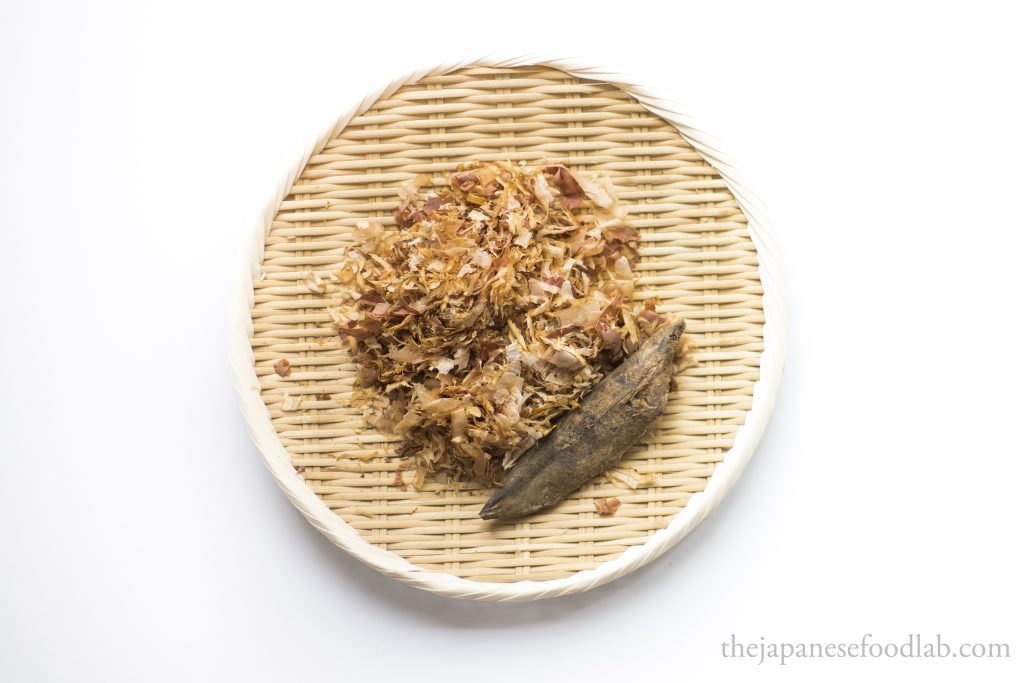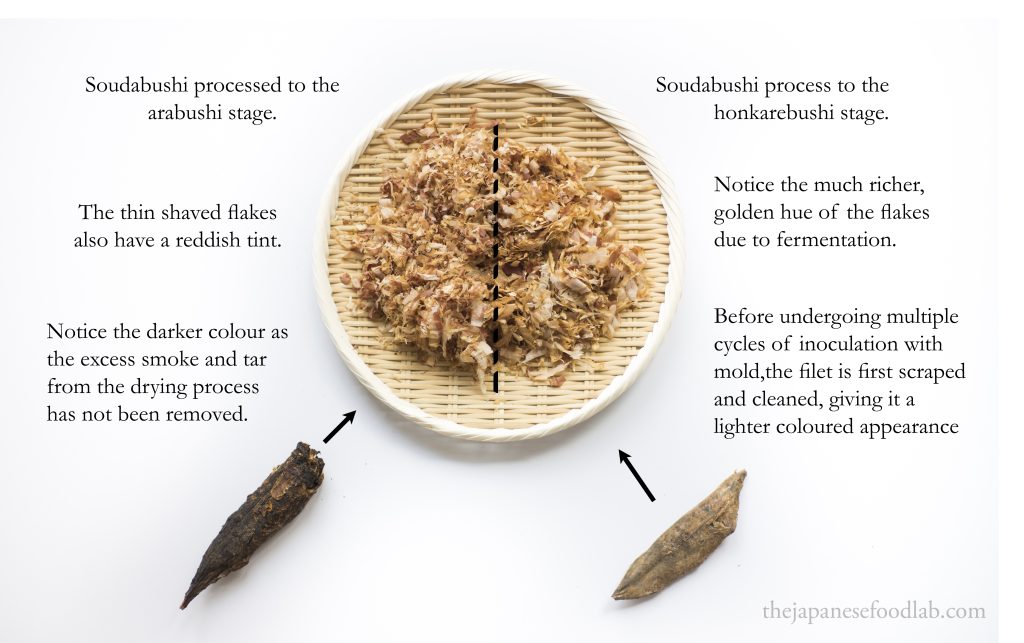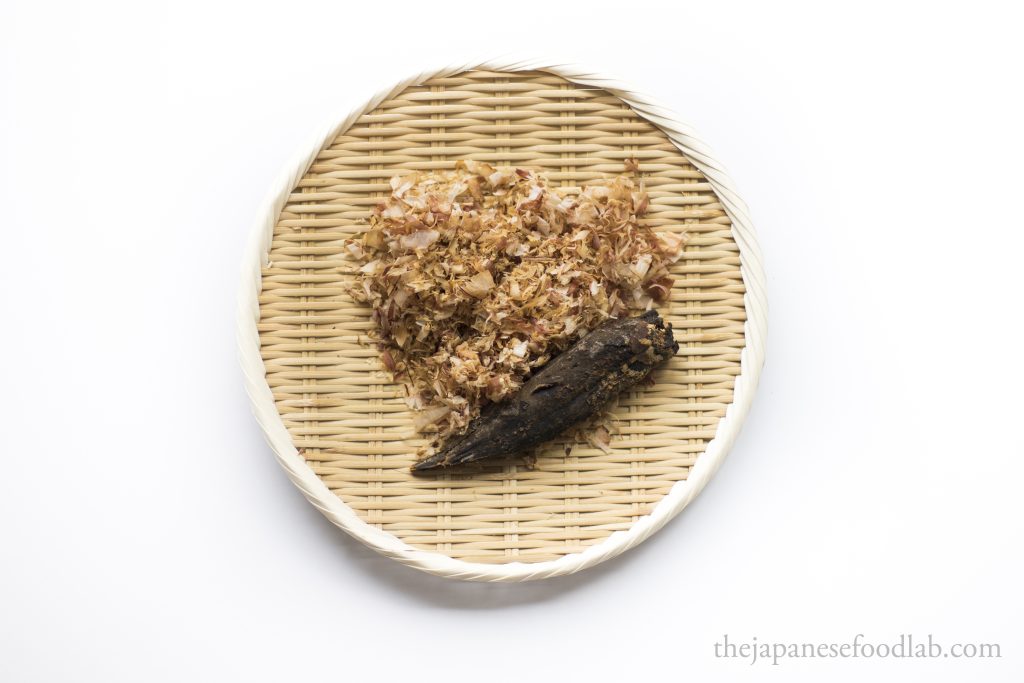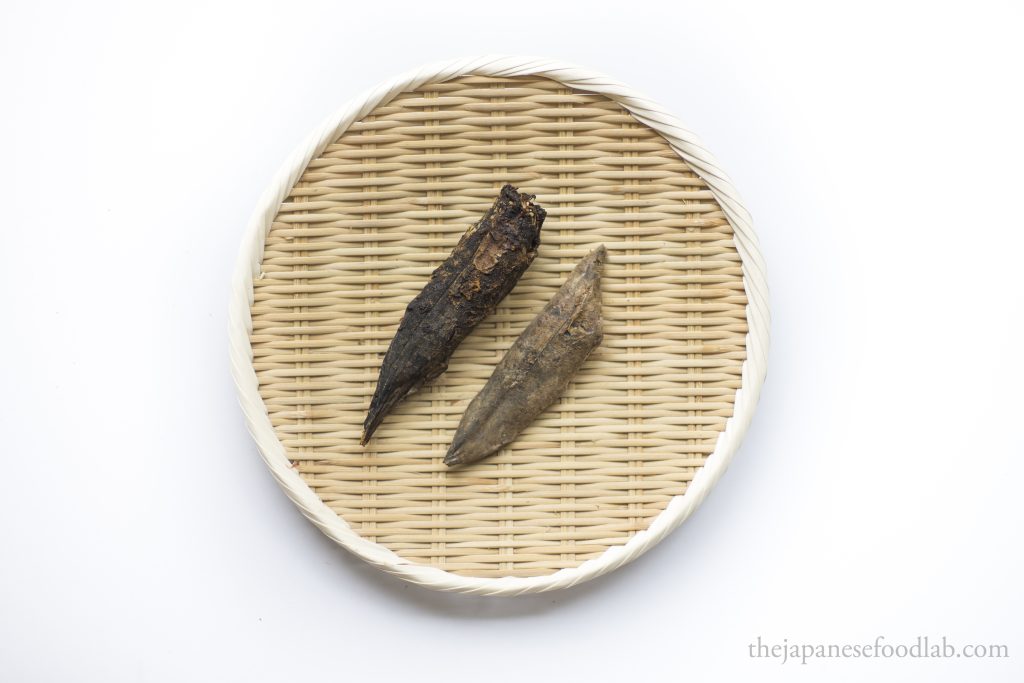This article is part of our series on other kinds of bushi. We recommend reading our article on how katsuobushi is made, how it is shaved, the different parts of katsuobushi and the different kinds of katsuobushi to better understand the terminology used here.

Soudabushi (宗田節), also known as mejika (めじか) is type of bushi made from spanish bonito (Auxis rochei/マルソウダ). Just like magurobushi the majority of soudabushi is processed until the arabushi stage (まぐろ荒節). Only an extremely small number of producers process soudabushi all the way to the honkarebushi stage (本枯宗田節) because it can take several months to make honkarebushi compared to a few weeks to make arabushi.

Because soudabushi is so much smaller compared to magurobushi and katsuobushi, the filets are not separated into back or stomach filets. Even for larger fish, each side is smoked whole. While filets processed this way are known as turtle filets (kamebushi/亀節) for katsuobushi, for soudabushi they’re simply known as split soudabushi (wari soudabushi/割り宗田節). The word split indicates that the fish had been split into three pieces, the bones and two filets. Smaller fish are processed into round soudabushi (maru soudabushi/丸宗田節) where the head is cut off and the internal organs removed through the head cavity. This is done without cutting open the belly or fileting the fish.
The taste of soudabushi is comparatively richer and heavier compared to that of katsuobushi. We’ve also found that dashi made from soudabushi can have an iron-like taste that gives it a rough mouthfeel towards the end. This is because the proportion of the blood line to body weight in soudabushi is much higher compared to katsuobushi. However, this mouthfeel disappears after leaving the dashi to rest in the fridge overnight.
Even though this is the case, the blood line is never removed in soudabushi as it contributes heavily to soudabushi’s rich and deep taste profile. Instead, it is usually used in combination with other bushi such as sababushi and urumebushi.

To make high quality soudabushi, it’s important to catch the fish when they have just the right amount of fat. Too much fat and the bushi risks going rancid and the resulting soup stock will be cloudy. Too little fat and the resulting soup stock will be flavorless.
For soudabushi, the sweet spot is fish caught between January and March known as samumejika (寒めじか). Any later and they start storing fat for spawning and any earlier they wouldn’t have used up all the fat stored for winter.

You won’t find soudabushi used at high end restaurants, but they’re commonly used at noodle restaurants in the Kansai region. They’re usually sold thick shaved thick shaved (厚削り) and are therefore meant to be boiled to produce a concentrated stock. You can sometimes find them thin shaved (薄削り) but that is usually for soudabushi that has been processed all the way to honkarebushi stage. Occasionally, you can buy small soudabushi used for steeping in soy sauce to enhance its flavor. If aiming for quality, look out for the word cold (samu/寒) which indicates the fish has been caught between January and March.